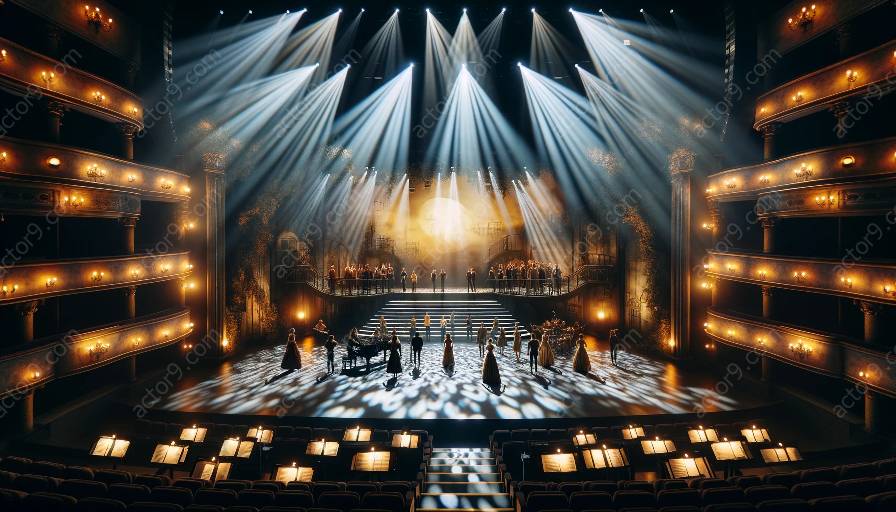Lighting design plays a crucial role in setting the mood and atmosphere in various forms of theatrical performances. In the world of musical theatre, the strategic use of color in lighting design can profoundly impact the overall experience for both the audience and performers. This topic cluster aims to delve into the influence of color on mood in lighting design and its applications in the context of musical theatre.
The Psychology of Color
Understanding the psychological effects of color is fundamental to effective lighting design. Different colors evoke specific emotional and psychological responses in individuals, making them powerful tools for creating desired moods and atmospheres. For example, red is often associated with passion, intensity, and excitement, while blue is linked to calmness, serenity, and introspection.
Color Temperature and Its Impact on Mood
Color temperature, measured in Kelvin, also plays a significant role in lighting design. Warm colors such as red, orange, and yellow have a higher color temperature and can create a cozy, intimate ambience, while cooler colors like blue and green with lower color temperatures tend to evoke a sense of calmness and tranquility.
Applications in Musical Theatre
Within the context of musical theatre, the use of color in lighting design can profoundly enhance the storytelling and emotional impact of the performance. For instance, in a lively and energetic musical number, vibrant and warm colors like red and orange may be employed to heighten the excitement and passion of the scene. Conversely, during a poignant and introspective moment, cooler tones such as blue and purple can help convey a sense of melancholy.
Color Combinations and Contrast
The careful juxtaposition of different colors and their intensities can create striking visual contrasts and enhance the visual impact of a musical theatre production. Complementary colors, such as red and green or blue and orange, can be used to create dynamic and visually engaging scenes that captivate the audience's attention.
Creating Immersive Environments
By leveraging the principles of color and mood in lighting design, theatre professionals can create immersive environments that transport the audience into the world of the performance. The judicious use of color can guide the audience's emotional journey, eliciting powerful responses and heightening the overall impact of the production.




































